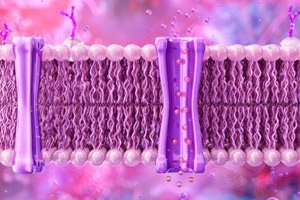
All iLive content is medically reviewed or fact checked to ensure as much factual accuracy as possible.
We have strict sourcing guidelines and only link to reputable media sites, academic research institutions and, whenever possible, medically peer reviewed studies. Note that the numbers in parentheses ([1], [2], etc.) are clickable links to these studies.
If you feel that any of our content is inaccurate, out-of-date, or otherwise questionable, please select it and press Ctrl + Enter.
Acetylated cellulose: a new prebiotic against weight gain via microbiota
Last reviewed: 09.08.2025
 ">
">Scientists from RIKEN, in collaboration with groups from the University of Tokyo and the University of Kyoto led by Dr. Tadashi Takeuchi, have published in Cell Metabolism the first comprehensive evaluation of acetylated cellulose (AceCel) as a prebiotic that can significantly limit weight gain in mice through modulation of gut microbiota and nutrient metabolism.
Why AceCel?
Traditional prebiotics (inulin, oligofructose) feed a wide range of bacteria, but not selectively. AceCel is cellulose to which acetyl substituents are covalently attached to 1/3 of the hydroxyl groups, creating a substrate only for specific hermeneutic bacteria, mainly Bacteroides thetaiotaomicron, capable of cleaving acetylated bonds.
Experimental design
- Diet composition: Mice on a 60% fat diet (DIO model) were supplemented with either 5% AceCel, equimolar untreated cellulose filler, or no additives.
- Weight and metabolism monitoring: body weight, eating behavior, OGTT and insulin resistance measurements were monitored for 8 weeks.
- Microbiota: 16S rRNA sequencing of feces at 2, 4 and 8 weeks.
- Mechanism: Gnotobiotic mice deprived of microbiota were then colonized with B. thetaiotaomicron, with and without AceCel.
- Liver and intestinal metabolomics and transcriptomics: measurement of short-chain fatty acids (SCFA), acetate, and transcripts of key genes involved in carbohydrate and lipid metabolism.
Key Results
- Limiting Weight Gain: Over 8 weeks, mice on AceCel gained only 8% of their body weight, compared to 30% on controls and 28% on regular cellulose.
- Improvement of glycemic profile: AUC decreased by 25% (p<0.01), HOMA-IR fell by 30% (p<0.05).
- Microbiota:
- AceCel induced a 10-fold increase in B. thetaiotaomicron by week 4 and inhibited the growth of Firmicutes.
- Gnotobiotic experiments confirmed that without B. thetaiotaomicron the effect of AceCel is lost, highlighting the critical role of this species.
SCFA and acetate anion:
Faecal acetate levels increased by 40% (p<0.01), but systemic concentrations decreased, indicating increased bacterial uptake.
Hepatic metabolism:
- Transcriptomics showed a decrease in the expression of Gck and Pklr (glycolytic enzymes) and an increase in Cpt1a and Ppara (β-oxidation of fats).
- The liver lipid profile was characterized by a 35% decrease in triglycerides (p<0.05).
“AceCel demonstrates a new way to not just feed the microbiota, but to make it ‘steal’ carbohydrates from the host and thereby redirect the energy balance,” comments Dr. Takeuchi.
Safety and Prospects
- Experimental data did not reveal an inflammatory response in the intestine or liver and did not change organ function parameters (ALT, AST).
- Next steps: human clinical studies to assess tolerability, effects on microbiota and carbohydrate metabolism.
- Optimization of preparation: acetylation level, fraction size and combination with probiotics ( B. thetaiotaomicron consumption?) are subject to further investigation.
In the article, the authors make several key comments:
Selectivity of the mechanism
“AceCel exhibits a unique prebiotic effect: instead of feeding a broad group of microbes, it selects a specific strain of Bacteroides thetaiotaomicron, redirecting carbohydrates from the host to microbial metabolism,” notes Dr. Tadashi Takeuchi, senior author of the study.The Role of Microbiota as a 'Competitor'
"Our gnotobiotic experiments clearly showed that without B. thetaiotaomicron, AceCel does not work. This highlights that prebiotics may act by enhancing competition for nutrients in the gut," explains co-author Dr. Ikeda.Potential for Humans
“While we see a powerful effect in mice, it is important to test the tolerability and metabolic dynamics of AceCel in humans,” says Dr. Sato. “Next clinical trials should include in-depth analysis of patients’ microbiota and metabolomics.”Safety
“There was no evidence of inflammation or tissue damage in the intestines or liver in our preclinical models, providing a rationale for moving forward to human trials,” adds Dr. Nakamoto.
These comments highlight that AceCel is a promising next-generation prebiotic, but its clinical translation requires careful evaluation of safety and mechanisms of action in humans.
AceCel is paving the way for a new generation of prebiotics that act not only by stimulating beneficial bacteria but also by competitively capturing nutrient substrates, opening the prospect of precision microbial-nutrient therapy for obesity and metabolic syndrome.
